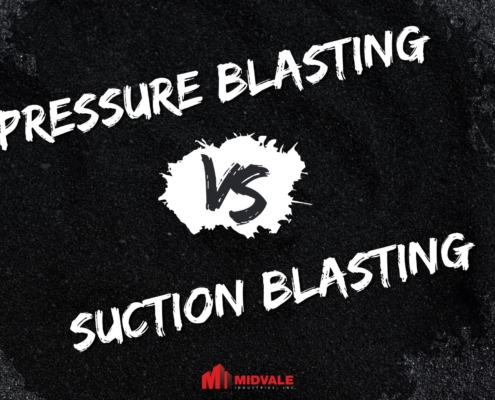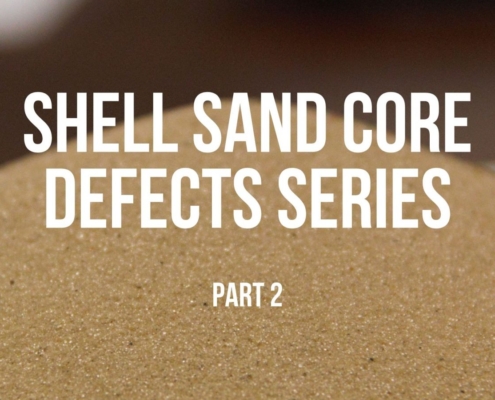 https://midvaleindustries.com/wp-content/uploads/2025/01/Copy-of-carbon-supply-chain.jpg
1260
2240
JBeasley
/wp-content/uploads/2024/06/Midvale-Logo-Web-Black.png
JBeasley2025-01-17 14:34:102025-06-30 09:12:40Strengthening Supply Chains: A Reliable Alternative for Foundry Carbon Amid Rising Tensions with China
https://midvaleindustries.com/wp-content/uploads/2025/01/Copy-of-carbon-supply-chain.jpg
1260
2240
JBeasley
/wp-content/uploads/2024/06/Midvale-Logo-Web-Black.png
JBeasley2025-01-17 14:34:102025-06-30 09:12:40Strengthening Supply Chains: A Reliable Alternative for Foundry Carbon Amid Rising Tensions with ChinaAnd How It Affects the Manufacturing Industries
The Internal Revenue Service (IRS) has re-instated a previous chemical tax after a hiatus for over 25 years. This ‘new’ chemical tax has amendments including updated tax rates on chemicals and chemical substances. The taxable items are broken up as “taxable chemicals” and “taxable substances”.
When does the Chemical Excise Tax go into effect?
As of July 1st, 2022 the Chemical Excise Tax is in full effect. The first return is due by October 31st, 2022 for the calendar quarter that ends on September 30th, 2022.
What is the tax rate?
The tax rate varies based on the type of chemical or substance. The rates range from as low as $0.44 per ton up to $9.74 per ton.
Which chemicals are included in the Chemical Excise Tax?
The IRS has compiled a list of “taxable chemicals” and “taxable chemical substances” that are to be taxed, which is subject to change. The “taxable substances” is considered as a substance that is comprised of more than 20% of one of the taxable chemicals, by weight or volume.
Who is responsible for paying the tax?
As stated by the IRS, “the manufacturer, producer, or importer of the taxable chemical is responsible for reporting and paying the section 4661 tax to the IRS. For taxable substances, the importer of the taxable substance is responsible for reporting and paying the section 4671 tax to the IRS.”
The taxes are to be reporting quarterly and payments be semimonthly. Those responsible for paying these chemical taxes must report them on IRS Form 720 and Form 6627.
How does this affect manufacturing industries?
Many chemicals in the excise tax are commonly used in many products throughout various industries, including foundry and parts cleaning applications. As this tax takes effect, price increases are likely from the manufacturers and importers of these products.
This tax affects such a wide range of chemicals that most industries will be affected. If you have any processes that use chemicals, you’ll be affected. Most of the affect as a use within your applications will come as prices increase long term from manufacturers and importers. Below are some specific items/processes that will be affected.
Foundry Industry
Some key items affected by this chemical tax will be sand binders, flux, adhesives, release agents, alloys, chromite sand, and more.
Parts Cleaning
Parts cleaning involves the use of various chemicals to aid in the cleaning of contaminants. Some of these chemicals may include the taxable items, driving a future increase in price on these items.
Contact our team and discuss potential proactive measures to prepare for this ‘new’ tax.
List of “taxable chemicals”:
- Acetylene
- Benzene
- Butane
- Butylene
- Butadiene
- Ethylene
- Methane
- Naphthalene
- Propylene
- Toluene
- Xylene
- Ammonia
- Antimony
- Antimony trioxide
- Arsenic
- Arsenic trioxide
- Barium sulfide
- Bromine
- Cadmium
- Chlorine
- Chromium
- Chromite
- Potassium dichromate
- Sodium dichromate
- Cobalt
- Cupric sulfate
- Cupric oxide
How does this affect manufacturing industries?
Many chemicals in the excise tax are commonly used in many products throughout various industries, including foundry and parts cleaning applications. As this tax takes effect, price increases are likely from the manufacturers and importers of these products.
This tax affects such a wide range of chemicals that most industries will be affected. If you have any processes that use chemicals, you’ll be affected. Most of the affect as a use within your applications will come as prices increase long term from manufacturers and importers. Below are some specific items/processes that will be affected.
Foundry Industry
Some key items affected by this chemical tax will be sand binders, flux, adhesives, release agents, alloys, chromite sand, and more.
Parts Cleaning
Parts cleaning involves the use of various chemicals to aid in the cleaning of contaminants. Some of these chemicals may include the taxable items, driving a future increase in price on these items.
Contact our team and discuss potential proactive measures to prepare for this ‘new’ tax.
How does this affect manufacturing industries?
Many chemicals in the excise tax are commonly used in many products throughout various industries, including foundry and parts cleaning applications. As this tax takes effect, price increases are likely from the manufacturers and importers of these products.
This tax affects such a wide range of chemicals that most industries will be affected. If you have any processes that use chemicals, you’ll be affected. Most of the affect as a use within your applications will come as prices increase long term from manufacturers and importers. Below are some specific items/processes that will be affected.
Foundry Industry
Some key items affected by this chemical tax will be sand binders, flux, adhesives, release agents, alloys, chromite sand, and more.
Parts Cleaning
Parts cleaning involves the use of various chemicals to aid in the cleaning of contaminants. Some of these chemicals may include the taxable items, driving a future increase in price on these items.
Contact our team and discuss potential proactive measures to prepare for this ‘new’ tax.
List of “taxable chemicals”:
- 1,4 butanediol
- 1,3-butylene glycol
- 1,5,9-cyclododecatriene
- 2-ethyl hexanol
- 2-ethylhexyl acrylate
- 2,2,4-trimethyl-1,3-pentanediol diisobutyrate
- 2,2,4-trimethyl-1,3-pentanediol monoisobutyrate
- acetic acid
- acetylene black
- adipic acid
- adiponitrile
- allyl chloride
- alpha-methylstyrene
- aniline
- benzaldehyde
- benzoic acid
- bisphenol-A
- butanol
- butyl acrylate
- butyl benzyl phthalate
- chlorinated polyethylene
- cyclododecanol
- decabromodiphenyl oxide
- di-2 ethyl hexyl phthalate
- di-n-hexyl adipate
- diethanolamine
- diglycidyl ether of bisphenol-A
- diisopropanolamine
- dimethyl terephthalate
- dimethyl-2, 6-naphthalene dicarboxylate
- diphenyl oxide
- diphenylamine
- epichlorohydrin
- ethyl acetate
- ethyl acrylate
- ethyl chloride
- ethylene dibromide
- ethylenebistetrabromophthalimide
- formic acid
- glycerine
- hexabromocyclododecane
- hexamethylenediamine
- isobutyl acetate
- isopropyl acetate
- linear alpha olefins
- methyl acrylate
- methyl chloroform
- methyl isobutyl ketone
- methyl methacrylate
- monochlorobenzene
- monoethanolamine
- monoisopropanolamine
List of “taxable substances”:
- normal butyl acetate
- normal propyl acetate
- nylon 6/6
- ortho-dichlorobenzene
- ortho-nitrochlorobenzene
- paraformaldehyde
- para-dichlorobenzene
- para-nitrochlorobenzene
- para-nitrophenol
- pentaerythritol
- perchloroethylene
- phenol
- phosphorous pentasulfide
- phosphorous trichloride
- poly 1,4 butyleneterephthalate
- poly (69/31 ethylene/cyclohexylenedimethylene terephthalate)
- poly (96.5/3.5 ethylene/cyclohexylenedimethylene terephthalate)
- poly (98.5/1.5 ethylene/cyclohexylenedimethylene terephthalate)
- poly(ethyleneoxy)glycerol
- poly(propylene)glycol
- poly(propylene/ethylene)glycol
- poly(propyleneoxy)glycerol
- poly(propyleneoxy)sucrose
- poly(propyleneoxy/ethyleneoxy)benzenediamine
- poly(propyleneoxy/ethyleneoxy)diamine
- poly(propyleneoxy/ethyleneoxy)glycerol
- poly(propyleneoxy/ethyleneoxy)sucrose
- polyalphaolefins
- polybutene
- polybutylene
- polybutylene/ethylene
- polycarbonate
- polyethylene terephthalate pellets
- propanol
- sodium nitriolotriacetate monohydrate
- synthetic linear fatty alcohols
- synthetic linear fatty alcohol ethoxylates
- terephthalic acid
- tetrabromobisphenol-A
- tetrachlorophthalic anhydride
- tetrahydrofuran
- texanol benzyl phthalate
- toluene diisocyanate
- toluenediamine
- trichloroethylene
- triethanolamine
- triisopropanolamine
- trimethylolpropane
- vinyl acetate
Share This Post
More Like This
 https://midvaleindustries.com/wp-content/uploads/2025/01/Copy-of-carbon-supply-chain.jpg
1260
2240
JBeasley
/wp-content/uploads/2024/06/Midvale-Logo-Web-Black.png
JBeasley2025-01-17 14:34:102025-06-30 09:12:40Strengthening Supply Chains: A Reliable Alternative for Foundry Carbon Amid Rising Tensions with China
https://midvaleindustries.com/wp-content/uploads/2025/01/Copy-of-carbon-supply-chain.jpg
1260
2240
JBeasley
/wp-content/uploads/2024/06/Midvale-Logo-Web-Black.png
JBeasley2025-01-17 14:34:102025-06-30 09:12:40Strengthening Supply Chains: A Reliable Alternative for Foundry Carbon Amid Rising Tensions with China https://midvaleindustries.com/wp-content/uploads/2024/08/Pressure-vs-Suction-Large.jpg
1260
2240
JBeasley
/wp-content/uploads/2024/06/Midvale-Logo-Web-Black.png
JBeasley2024-04-29 16:11:322025-06-30 09:12:41Difference Between Pressure vs Suction Blast Cabinet
https://midvaleindustries.com/wp-content/uploads/2024/08/Pressure-vs-Suction-Large.jpg
1260
2240
JBeasley
/wp-content/uploads/2024/06/Midvale-Logo-Web-Black.png
JBeasley2024-04-29 16:11:322025-06-30 09:12:41Difference Between Pressure vs Suction Blast Cabinet https://midvaleindustries.com/wp-content/uploads/2024/08/Painting-vs-Powder-Coating-1.jpg
1260
2240
JBeasley
/wp-content/uploads/2024/06/Midvale-Logo-Web-Black.png
JBeasley2023-08-29 20:22:072025-06-30 09:12:42Painting vs. Powder Coating
https://midvaleindustries.com/wp-content/uploads/2024/08/Painting-vs-Powder-Coating-1.jpg
1260
2240
JBeasley
/wp-content/uploads/2024/06/Midvale-Logo-Web-Black.png
JBeasley2023-08-29 20:22:072025-06-30 09:12:42Painting vs. Powder Coating https://midvaleindustries.com/wp-content/uploads/2024/08/Core-Defects-Series-part-2-4.jpg
900
1600
JBeasley
/wp-content/uploads/2024/06/Midvale-Logo-Web-Black.png
JBeasley2021-03-09 16:30:562025-06-30 09:12:45Sand Casting Core Defects Series – Part 2
https://midvaleindustries.com/wp-content/uploads/2024/08/Core-Defects-Series-part-2-4.jpg
900
1600
JBeasley
/wp-content/uploads/2024/06/Midvale-Logo-Web-Black.png
JBeasley2021-03-09 16:30:562025-06-30 09:12:45Sand Casting Core Defects Series – Part 2 https://midvaleindustries.com/wp-content/uploads/2024/08/Core-Defects-Series-part-1-2.jpg
900
1600
Nate Riggins
/wp-content/uploads/2024/06/Midvale-Logo-Web-Black.png
Nate Riggins2021-01-26 15:04:152025-06-30 09:12:46Sand Casting Core Defects Series – Part 1
https://midvaleindustries.com/wp-content/uploads/2024/08/Core-Defects-Series-part-1-2.jpg
900
1600
Nate Riggins
/wp-content/uploads/2024/06/Midvale-Logo-Web-Black.png
Nate Riggins2021-01-26 15:04:152025-06-30 09:12:46Sand Casting Core Defects Series – Part 1 https://midvaleindustries.com/wp-content/uploads/2024/08/ARE-robotics-right-for-you_-1-2.jpg
900
1600
JBeasley
/wp-content/uploads/2024/06/Midvale-Logo-Web-Black.png
JBeasley2021-01-25 16:03:062025-06-30 09:12:46Are Robotics Right For Your Application?
https://midvaleindustries.com/wp-content/uploads/2024/08/ARE-robotics-right-for-you_-1-2.jpg
900
1600
JBeasley
/wp-content/uploads/2024/06/Midvale-Logo-Web-Black.png
JBeasley2021-01-25 16:03:062025-06-30 09:12:46Are Robotics Right For Your Application? https://midvaleindustries.com/wp-content/uploads/2024/08/cast-zinc-shot-header-2.png
900
1600
JBeasley
/wp-content/uploads/2024/06/Midvale-Logo-Web-Black.png
JBeasley2020-09-30 16:05:142025-06-30 09:12:47Cast Zinc Shot: Cost Saving Benefits for Shot Blasting
https://midvaleindustries.com/wp-content/uploads/2024/08/cast-zinc-shot-header-2.png
900
1600
JBeasley
/wp-content/uploads/2024/06/Midvale-Logo-Web-Black.png
JBeasley2020-09-30 16:05:142025-06-30 09:12:47Cast Zinc Shot: Cost Saving Benefits for Shot Blasting https://midvaleindustries.com/wp-content/uploads/2024/08/wheel-blast-blod-header-text-2.png
900
1600
Nate Riggins
/wp-content/uploads/2024/06/Midvale-Logo-Web-Black.png
Nate Riggins2020-08-14 14:43:402025-06-30 09:12:488 Quick Tips for Extending the Life of Your Gibson Wheel Blast System
https://midvaleindustries.com/wp-content/uploads/2024/08/wheel-blast-blod-header-text-2.png
900
1600
Nate Riggins
/wp-content/uploads/2024/06/Midvale-Logo-Web-Black.png
Nate Riggins2020-08-14 14:43:402025-06-30 09:12:488 Quick Tips for Extending the Life of Your Gibson Wheel Blast System https://midvaleindustries.com/wp-content/uploads/2024/08/Diamond-Grinding-Wheels-2.png
900
1600
Nate Riggins
/wp-content/uploads/2024/06/Midvale-Logo-Web-Black.png
Nate Riggins2020-08-12 15:33:492025-06-30 09:12:48Why Use Diamond Grinding Wheels in Your Cleaning Room?
https://midvaleindustries.com/wp-content/uploads/2024/08/Diamond-Grinding-Wheels-2.png
900
1600
Nate Riggins
/wp-content/uploads/2024/06/Midvale-Logo-Web-Black.png
Nate Riggins2020-08-12 15:33:492025-06-30 09:12:48Why Use Diamond Grinding Wheels in Your Cleaning Room?


